|
INSECTS ON WILLOWS: EXTERNAL FEEDERS Insects that feed externally on leaves or other parts of willows include especially various beetles (Coleoptera), butterlies and moths (Lepidoptera), sawflies (Hymenoptera), and aphids and planthoppers (Hemiptera). In all, this guild includes hundreds of species, and many of them are very difficult to identify to the species level. |
||
|
External-feeding beetles (Coleoptera) Willows support a wide variety of beetles, many of which belong to leaf beetles (Chrysomelidae) or weevils (Curculionidae). Some species feed externally as adults although their larvae live internally in plant tissues. |
||
|
Chrysomela lapponica (Coleoptera: Chrysomelidae) This orange-black chrysomelid species occurs on willow species that contain a lot of salicylates, that the beetle larvae use in the production of defensive secretions. The proportion of black colour on the adults varies both within and among populations. |
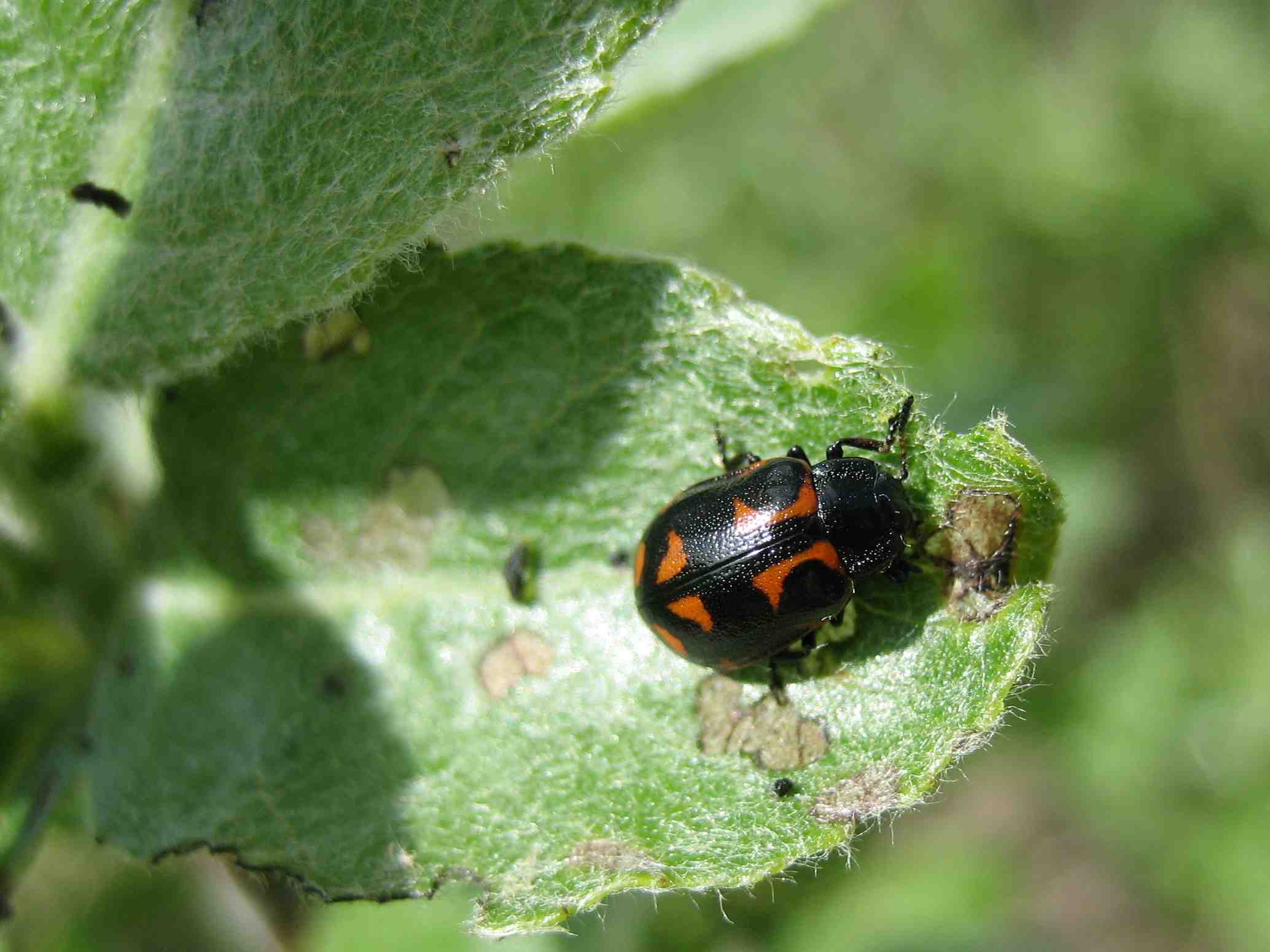 |
|
|
Chrysomela lapponica on Salix borealis. |
Chrysomela lapponica on Salix pentandra. |
|
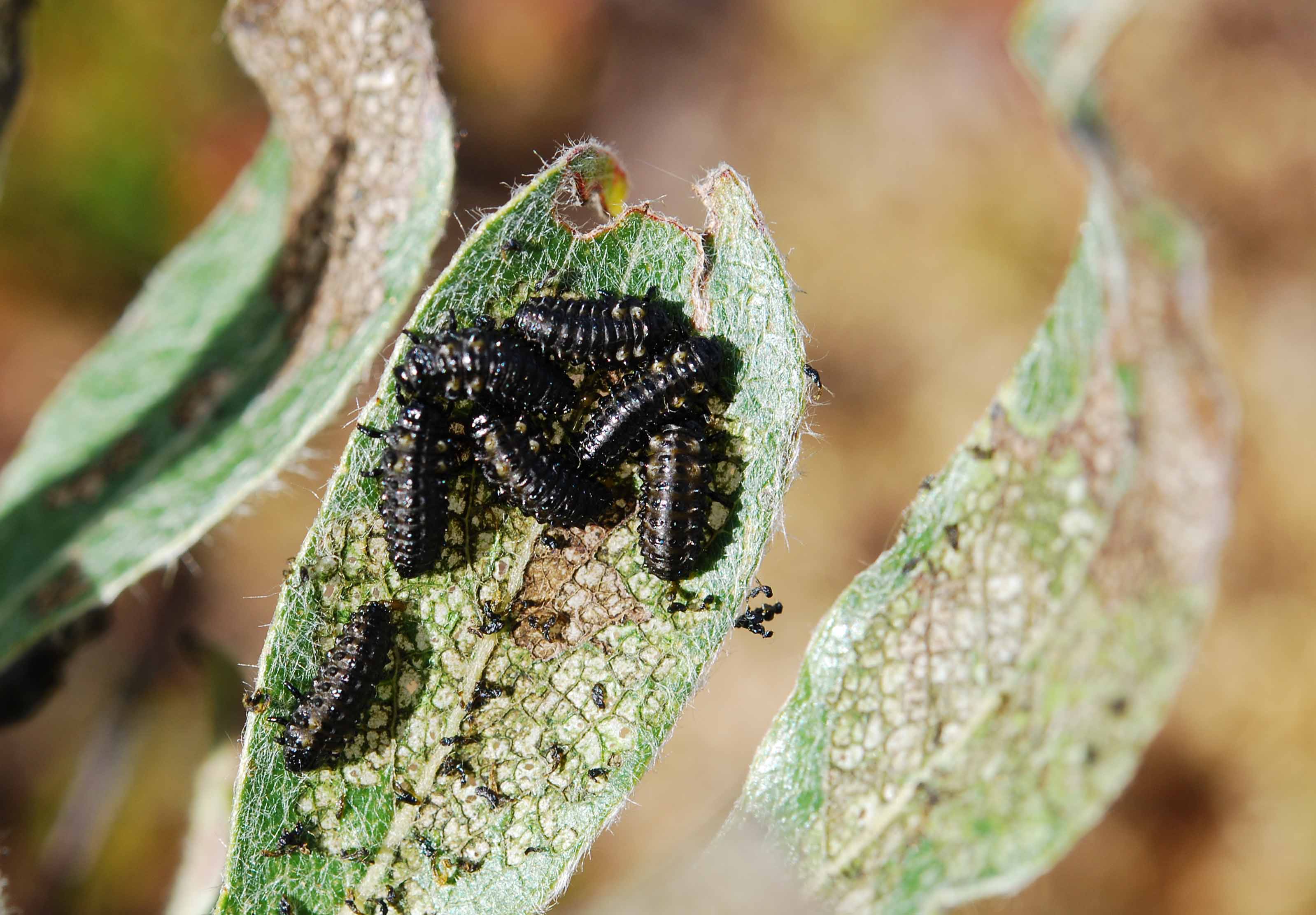 |
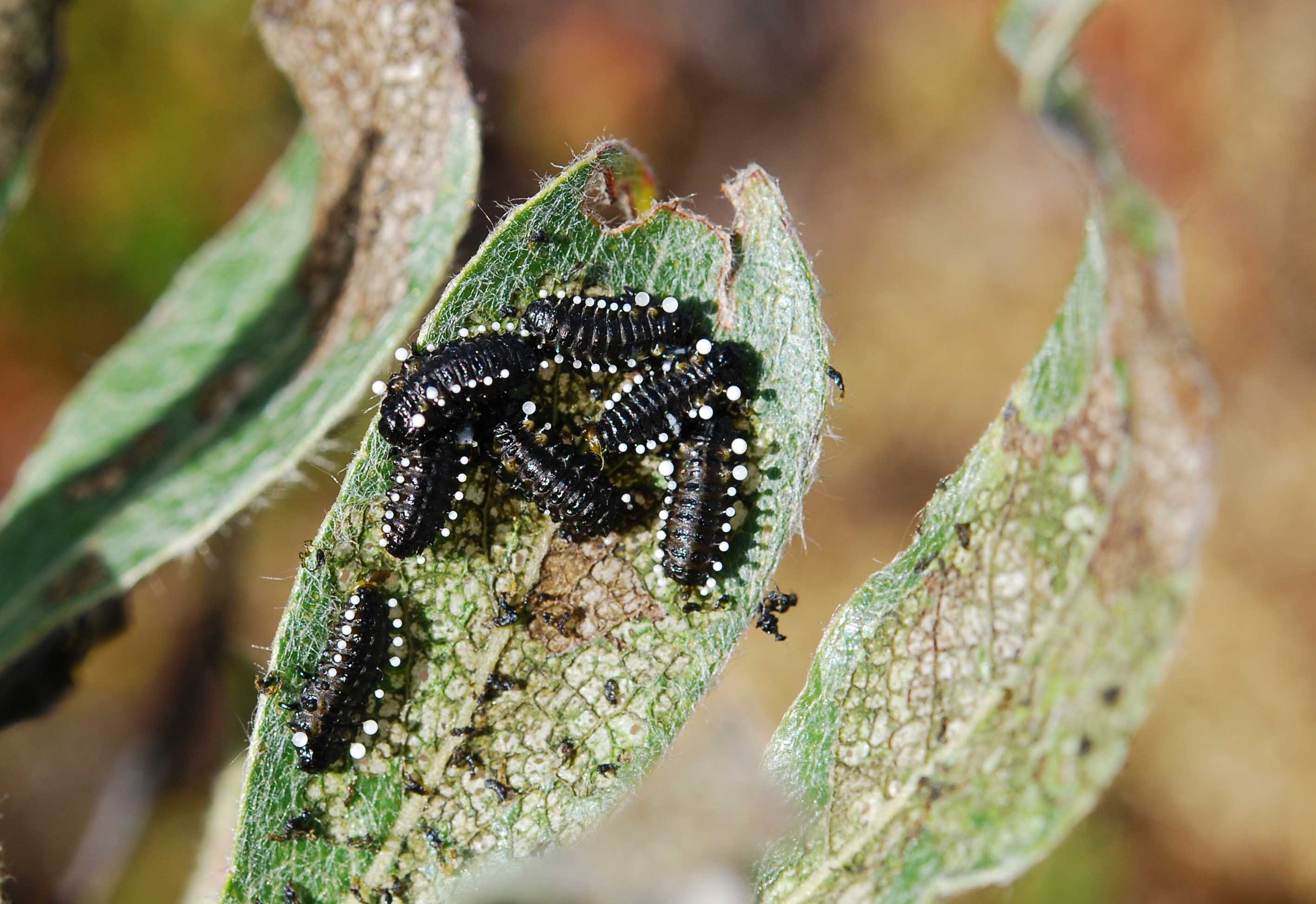 |
|
|
Group of Chrysomela lapponica larvae skeletonizing leaves of Salix glauca. |
Same group of larvae with the foul-smelling defensive secretion everted from the paired dorsal glands. The liquid is drawn back into the glands when the larvae feel safe again. |
|
|
Chrysomela collaris (Coleoptera: Chrysomelidae) In northern Fennoscandia, this colourful species occurs on arctic-alpine dwarf willows but, interestingly, on the coastal sand dunes of Central Europe it feeds on the more "normal-sized" Salix repens. |
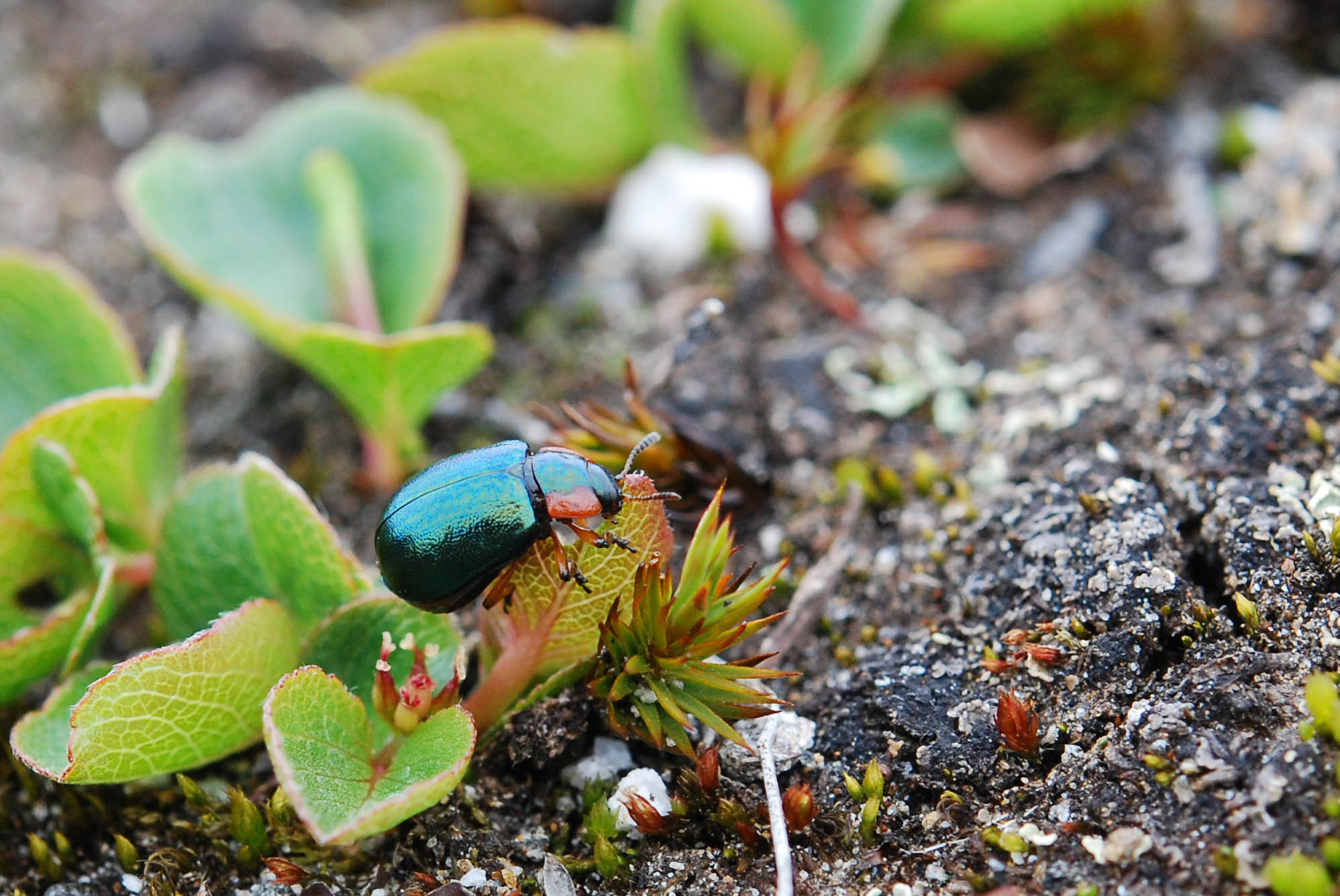 |
|
|
Adult Chrysomela collaris feeding on the dwarf willow Salix herbacea. |
||
|
Galerucella lineola (Coleoptera: Chrysomelidae) Adults and larvae of this common species can be found especially on plants growing close to water. The species feeds on willows and alders (Alnus spp.), but feeding tests have shown that the "species" probably consists of at least two host races. Galerucella lineola resembles Lochmaea caprea (below), but note the the reddish brown colour, light legs, and hairy elytrae. |
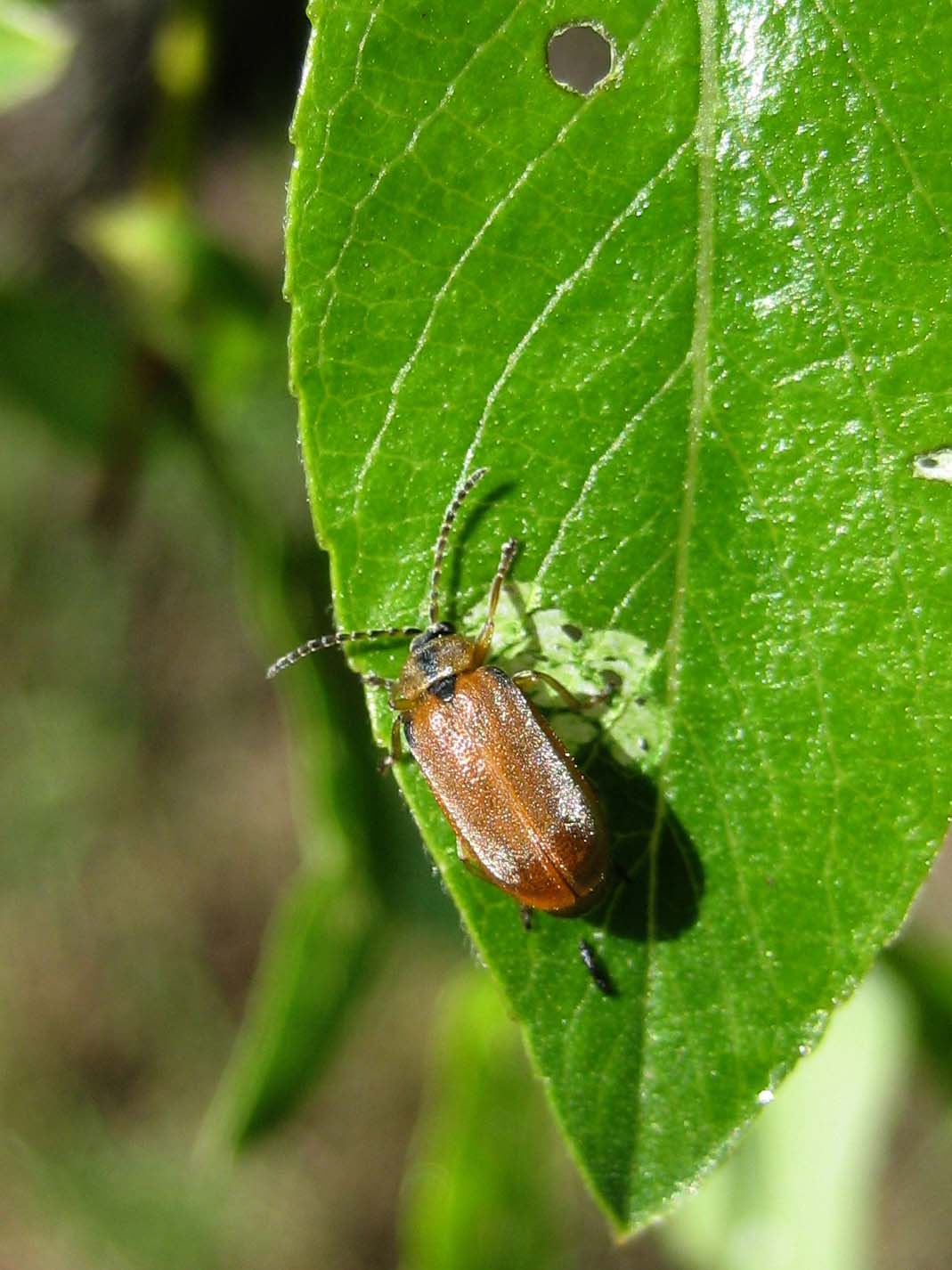 |
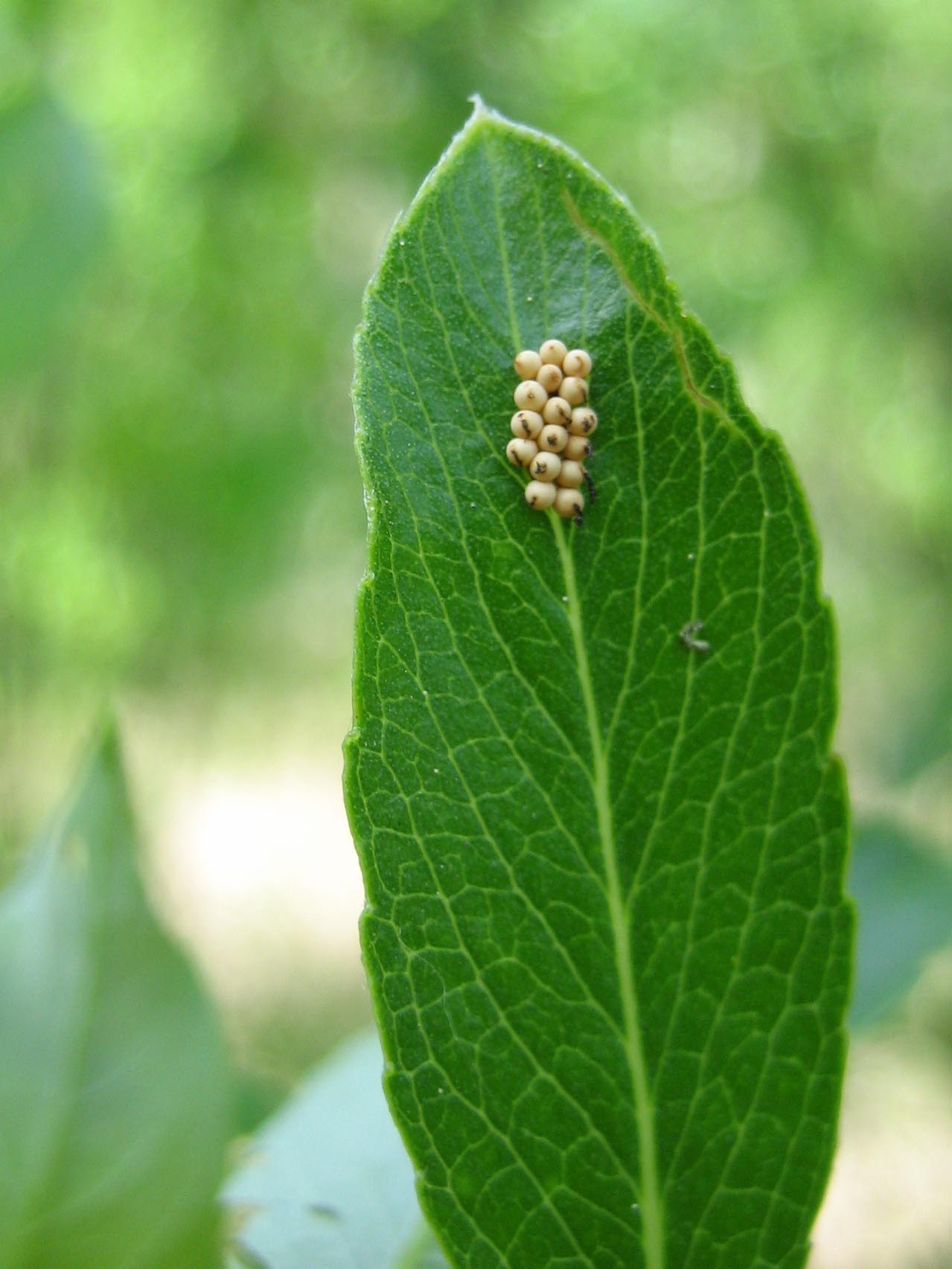 |
|
Galerucella lineola adult feeding on Salix phylicifolia. |
Egg batch of Galerucella lineola on leaf of Salix phylicifolia. |
|
|
Lochmaea caprea (Coleoptera: Chrysomelidae) A common, shining-brown species on many different willow species and also on other plant genera. Lochmaea caprea is of the same size as Galerucella lineola (above), but Lochmaea caprea is darker brown, and especially the legs are dark. |
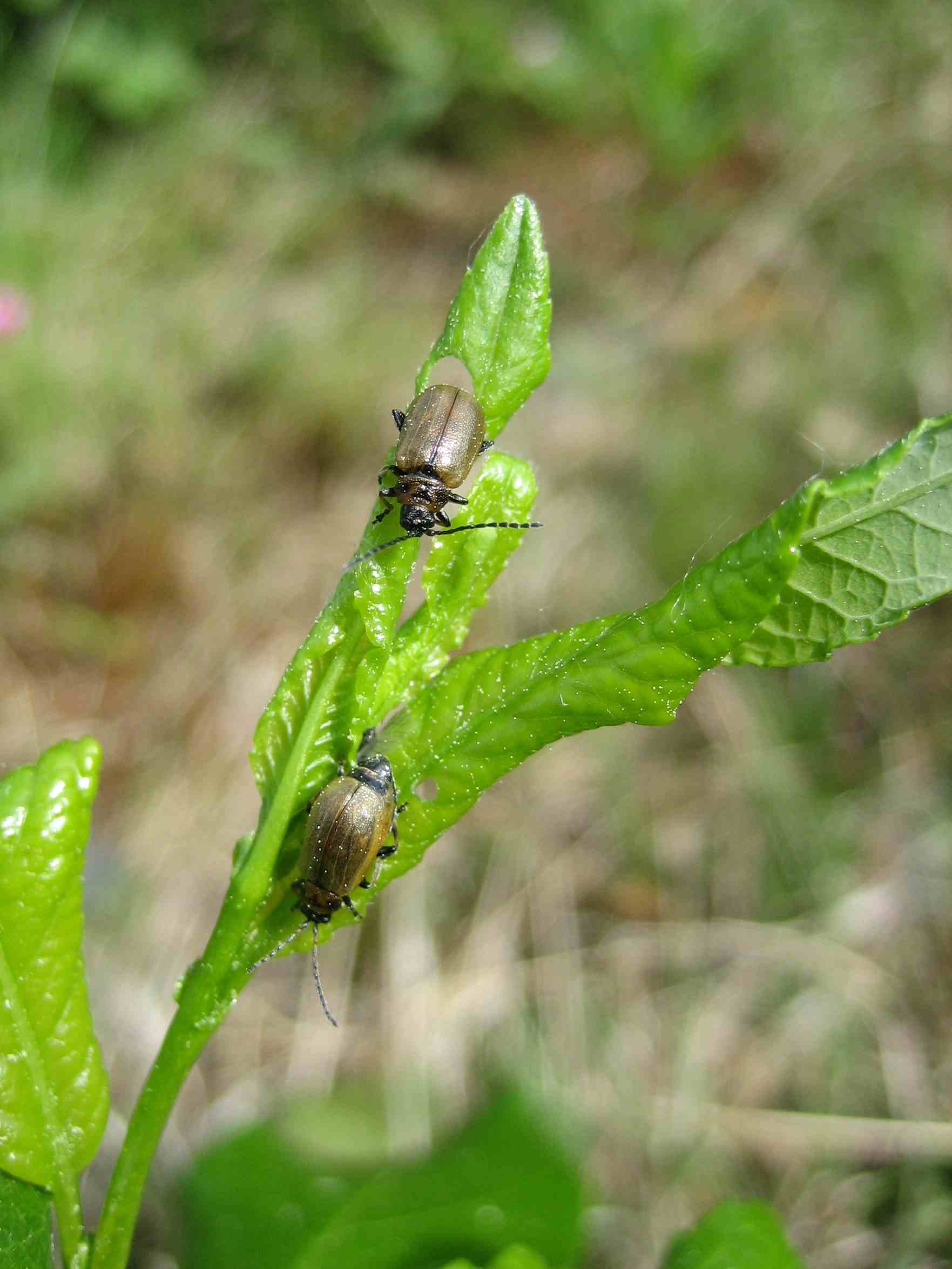 |
|
|
Lochmaea caprea adults on Salix phylicifolia. |
|
|
|
Others There are bzillions of other beetle species on willows... |
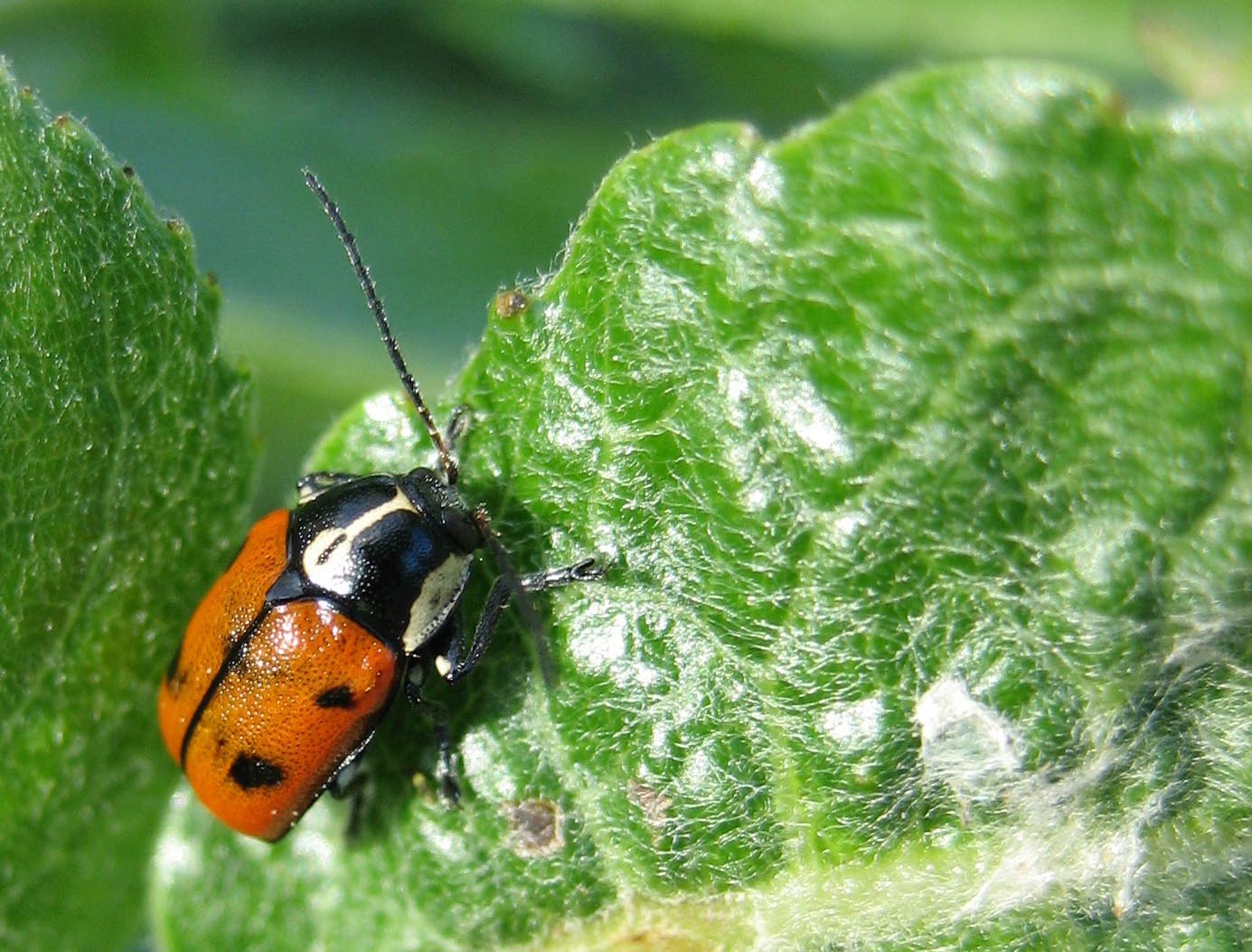 |
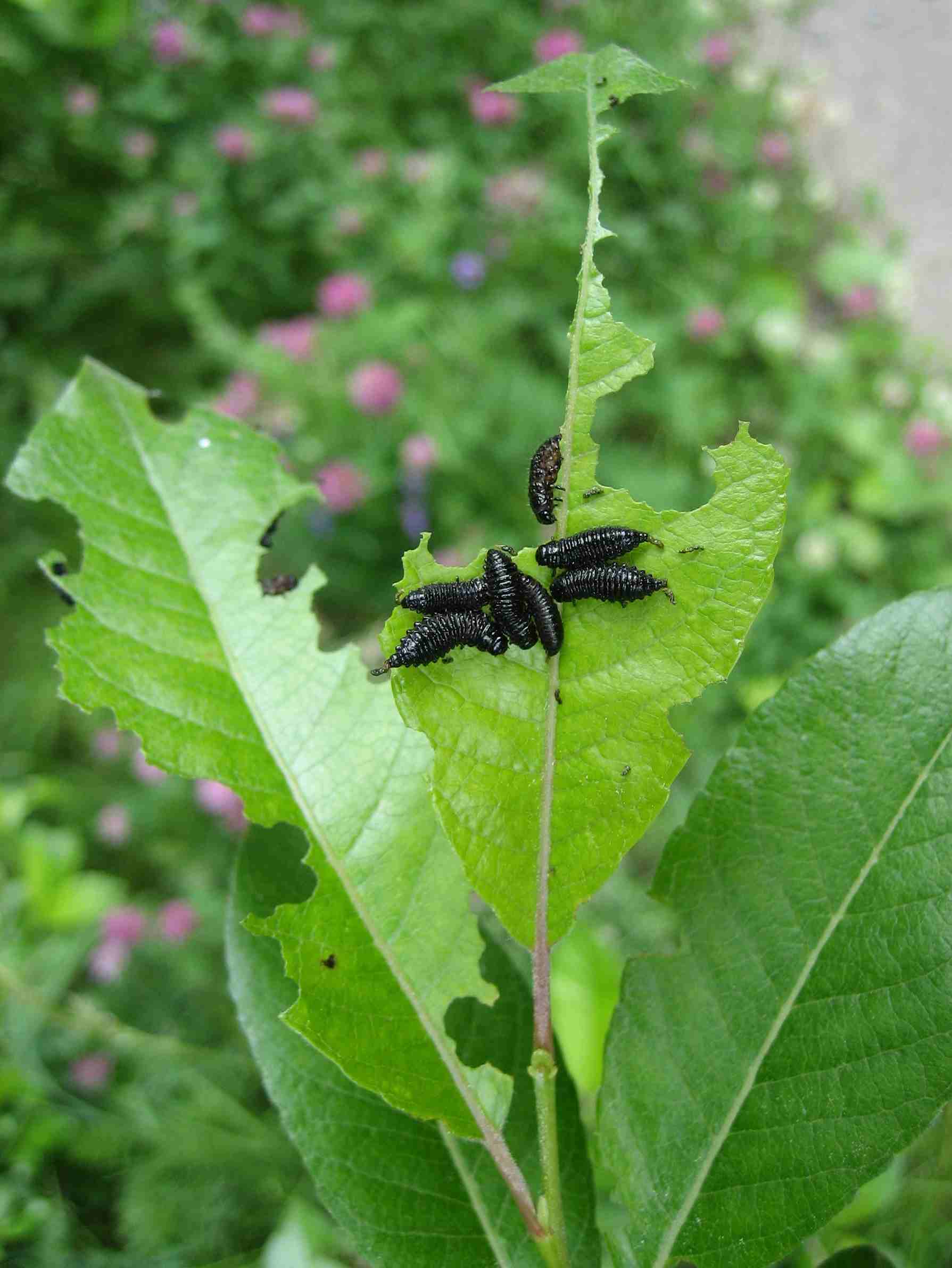 |
|
Cryptocephalus octopunctatus (Chrysomelidae) on Salix myrsinifolia. |
Unidentified chrysomelid larvae on Salix phylicifolia (probably Gonioctena viminalis, but needs to be checked). |
|
|
|
|
|
|
Clytra quadripunctata (Chrysomelidae) on Salix phylicifolia. The adults of this species feed on various willows and other plants, larvae feed on eggs and larvae of ants. |
Cryptorhynchus lapathi (Curculionidae) chewing a hole in a Salix caprea stem. The larvae bore tunnels inside the stems of alder and willow species. |
|
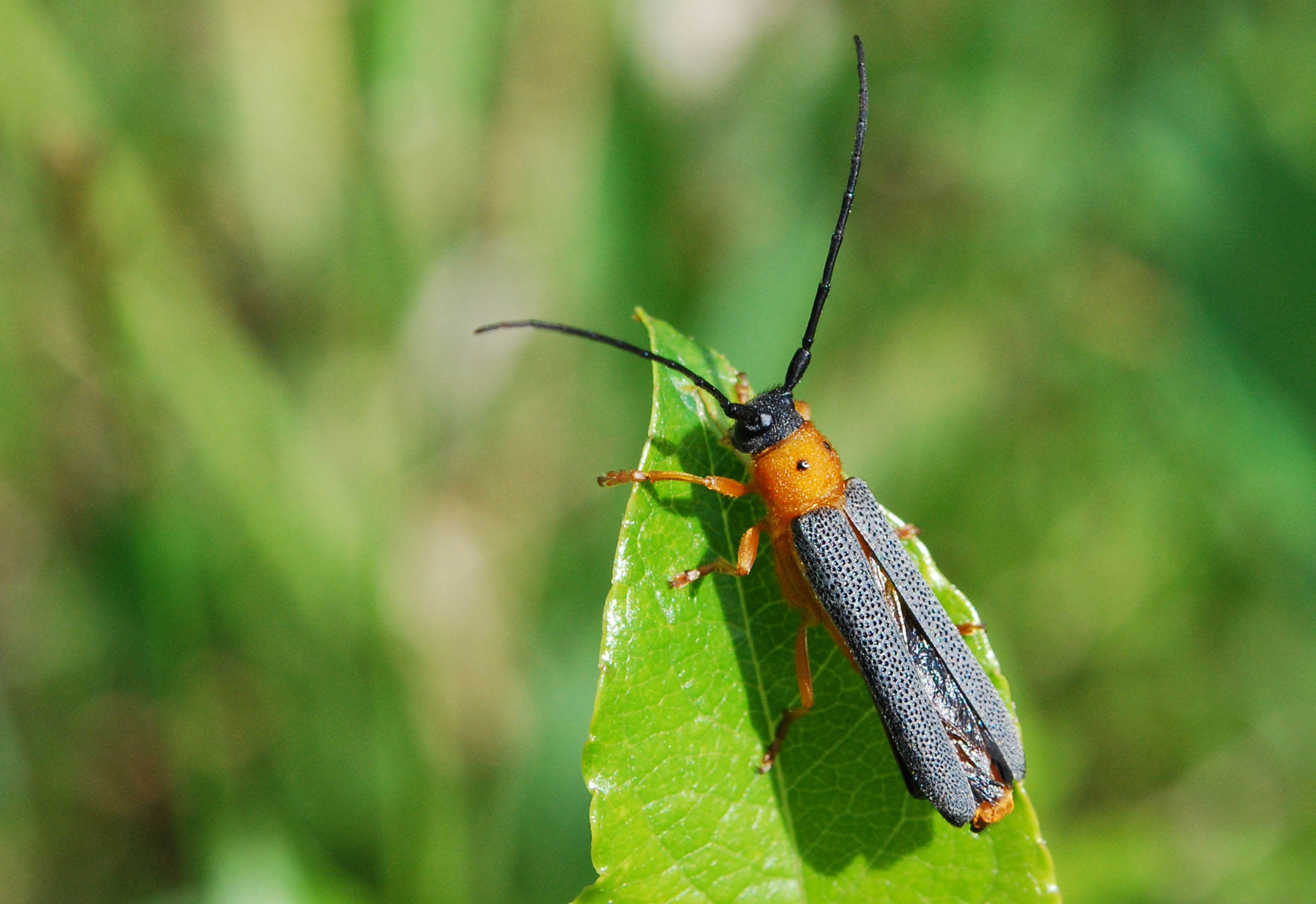 |
||
|
Oberea oculata (Cerambycidae) on Salix phylicifolia. Adults of this showy species feed on leaves, but the larvae bore inside willow shoots. |
||
|
External-feeding moths and butterflies (Lepidoptera) Many moth and butterfly species rely on willows in their larval stages. Below are just a couple of examples. |
||
|
Laothoe populi (Lepidoptera: Sphingidae) (Left) This species mostly feeds on aspen and willows, but larvae are occasionally found also on plants belonging to other genera.
Leucoma salicis (Lepidoptera: Lymantriidae) (Right) This lymantriid moth is associated with aspen and many willow species. |
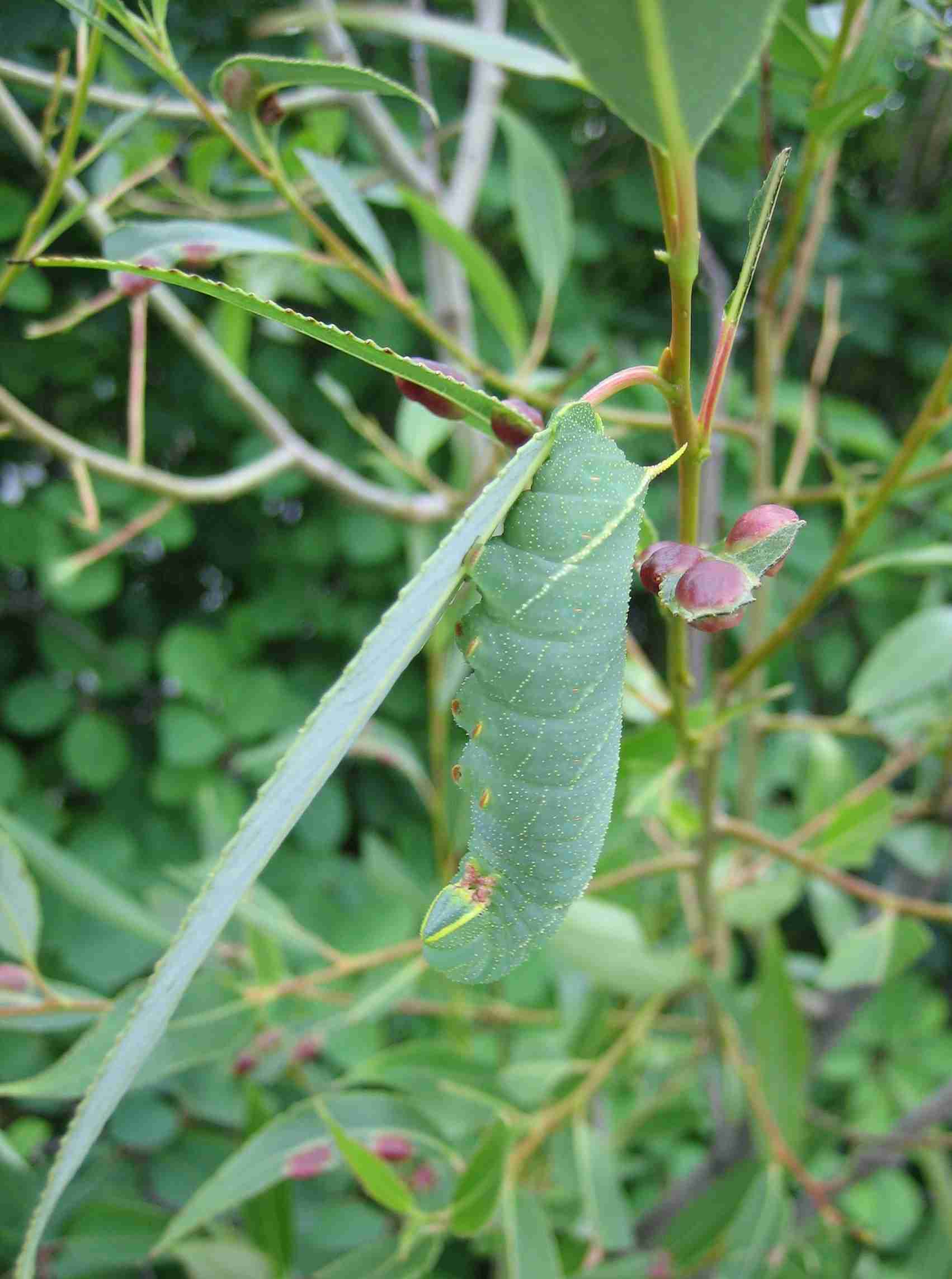 |
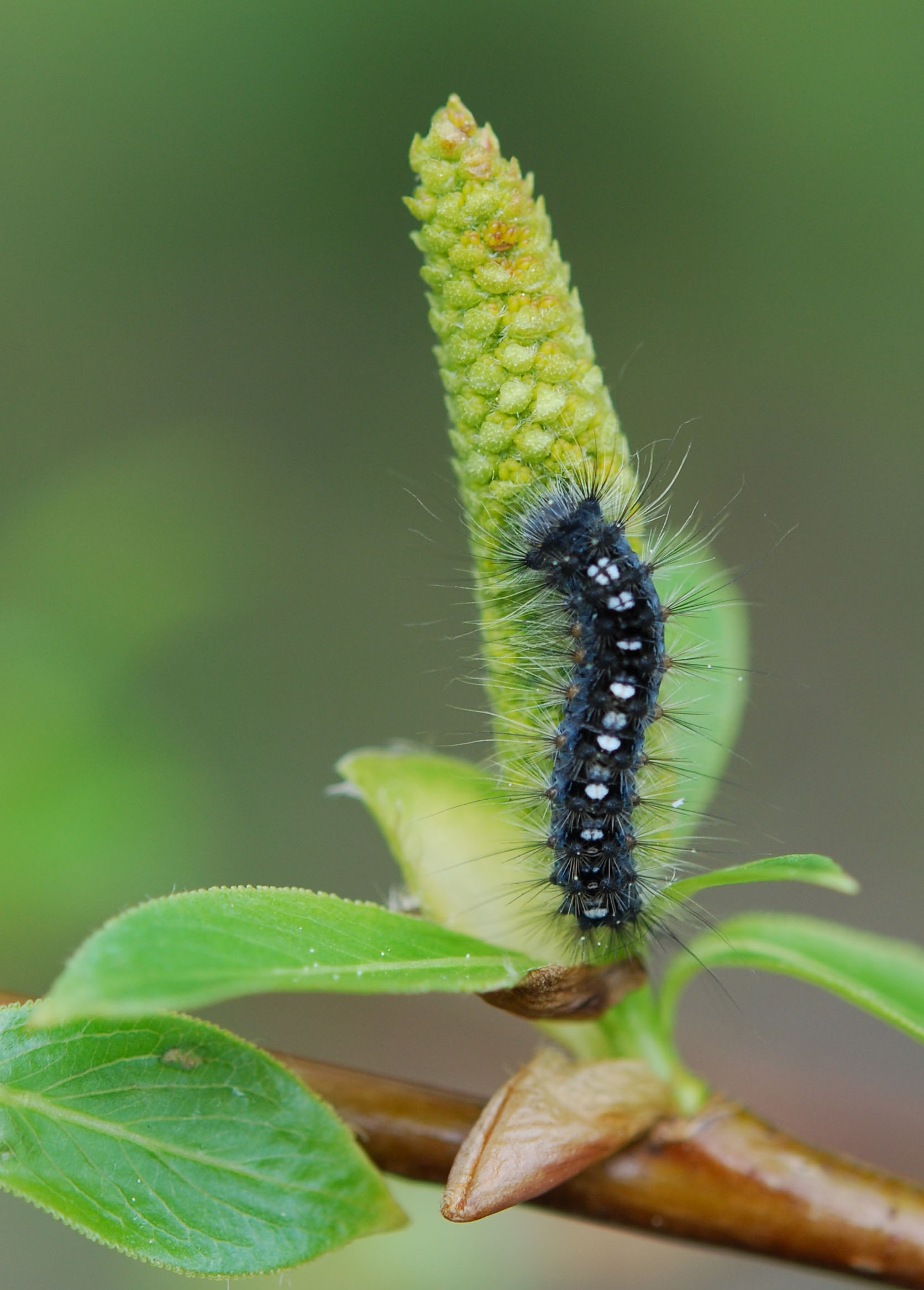 |
|
Full-grown larva of the sphingid moth Laothoe populi on Salix fragilis. Note the reddish bean galls of the nematine sawfly Pontania proxima that have remained uneaten. |
Young larva of Leucoma salicis feeding on a Salix pentandra male catkin, usually the larvae feed on leaves. |
|
|
External-feeding sawflies (Hymenoptera: Symphyta) Salix is one of the most important host-plant groups for sawflies, and external willow feeders occur commonly in the families Tenthredinidae, Cimbicidae, and Argidae. The larvae are often easier to identify than the adults. More willow-feeding nematine sawflies can be found on the front page. |
||
|
Nematinae sawflies (Hymenoptera: Tenthredinidae) The sawfly subfamily Nematinae includes hundreds of species, most of which feed on willows. Many external-feeding nematines oviposit early in the spring, when the willow shoots start to grow (left). Their larvae (right) resemble butterfly and moth larvae, but they can be distinguished by counting the abdominal prolegs that are located behind the three pairs of thoracic legs on the larva: sawfly larvae have 6-7 pairs of prolegs, whereas lepidopteran larvae have fewer than four pairs. Larvae of sawflies also tend to be rather round-headed compared to lepidopteran larvae. |
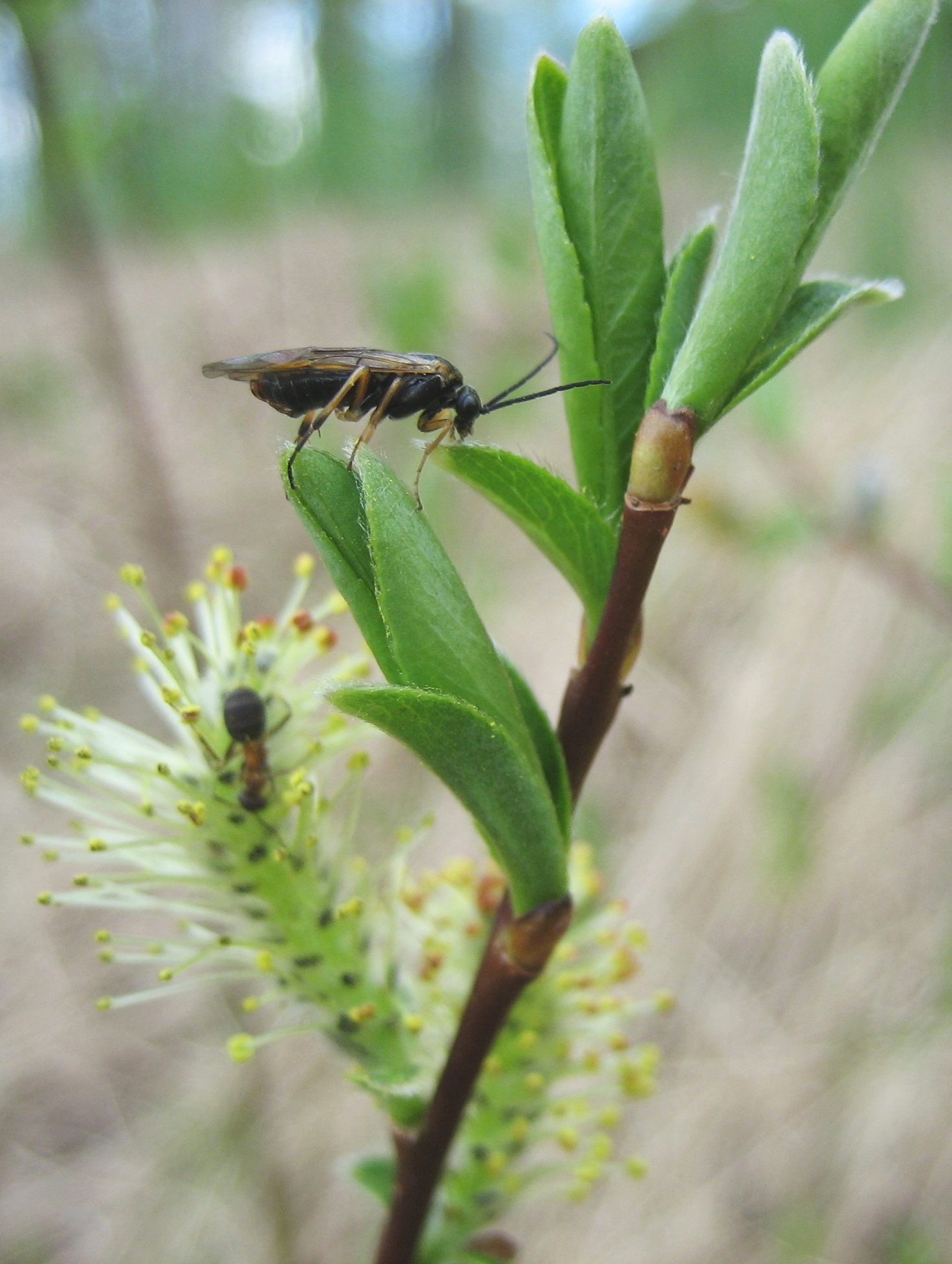 |
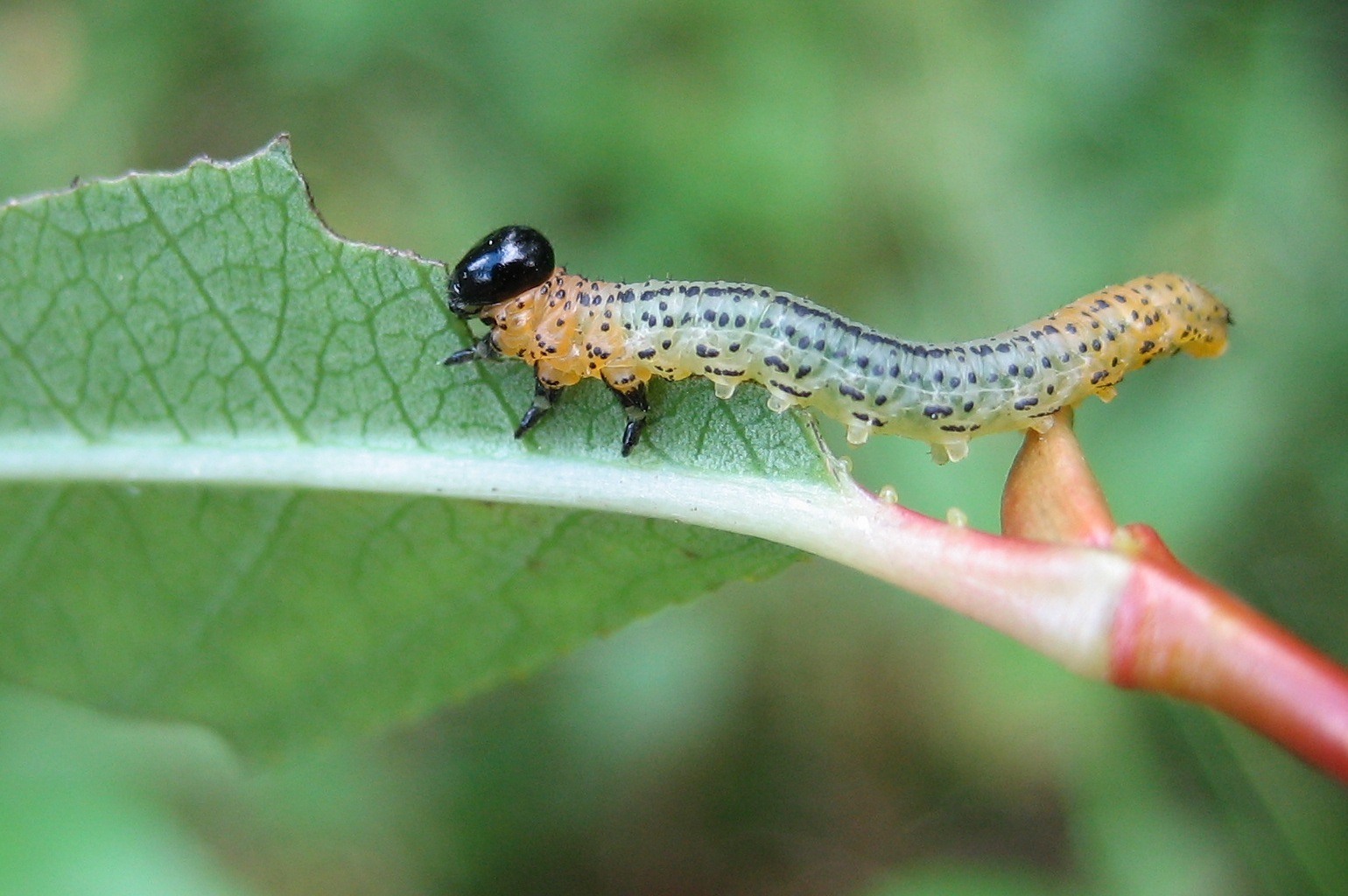 |
|
Unidentified nematine sawfly female inspecting Salix phylicifolia leaves prior to oviposition. |
Nematus miliaris larva feeding on Salix pentandra. Note the seven pairs of abdominal prolegs of the larva. |
|
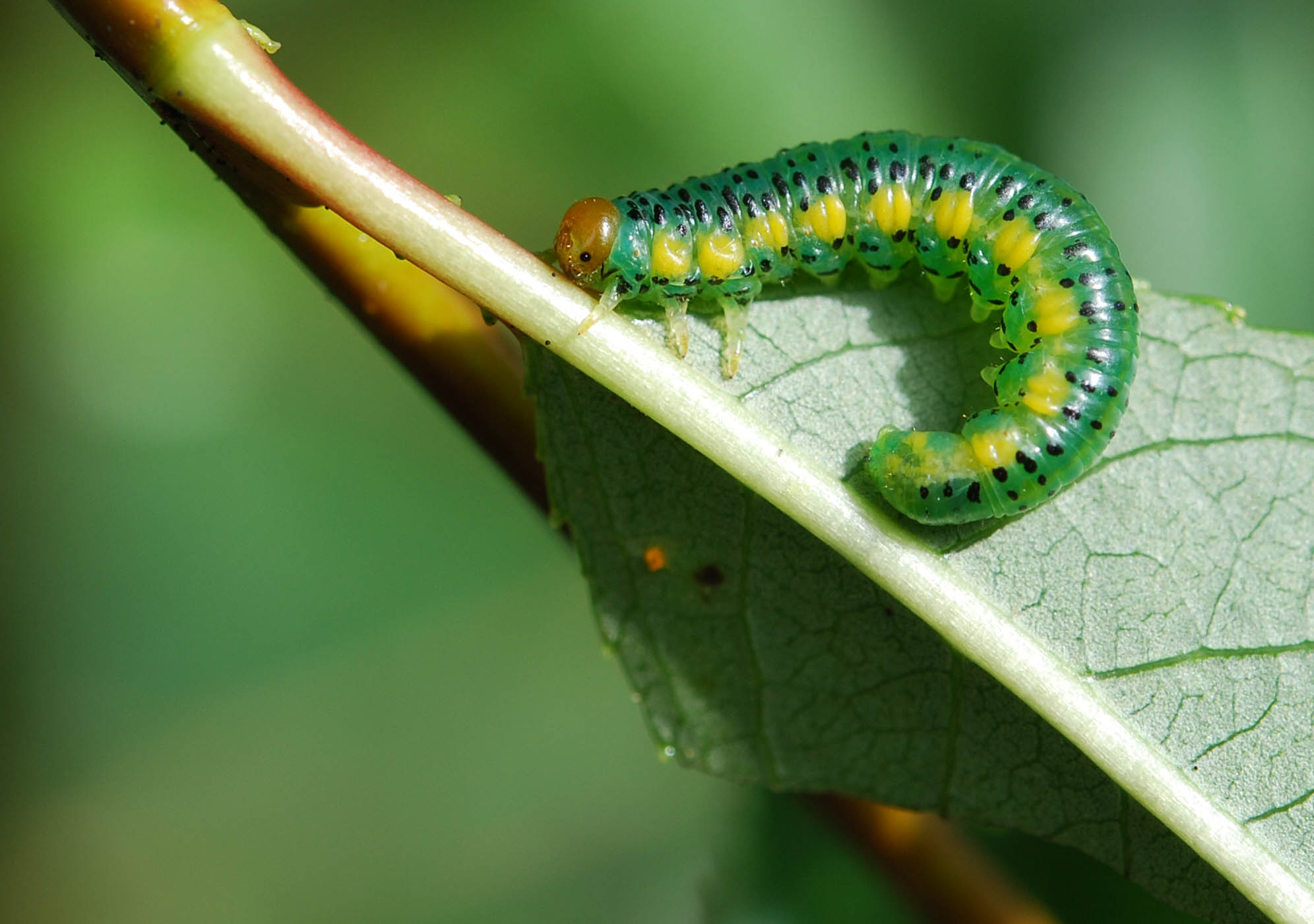 |
||
|
Nematus bohemani larva on Salix pentandra. |
||
|
Trichiosoma sp. (Hymenoptera: Cimbicidae) Trichiosoma adults are big, noisy, and clumsy, and resemble bumblebees in their general appearance. Like other cimbicids, they have clubbed antennae. Their robust larvae are round-headed and green, and during the day they often rest in a coiled position under the leaves. |
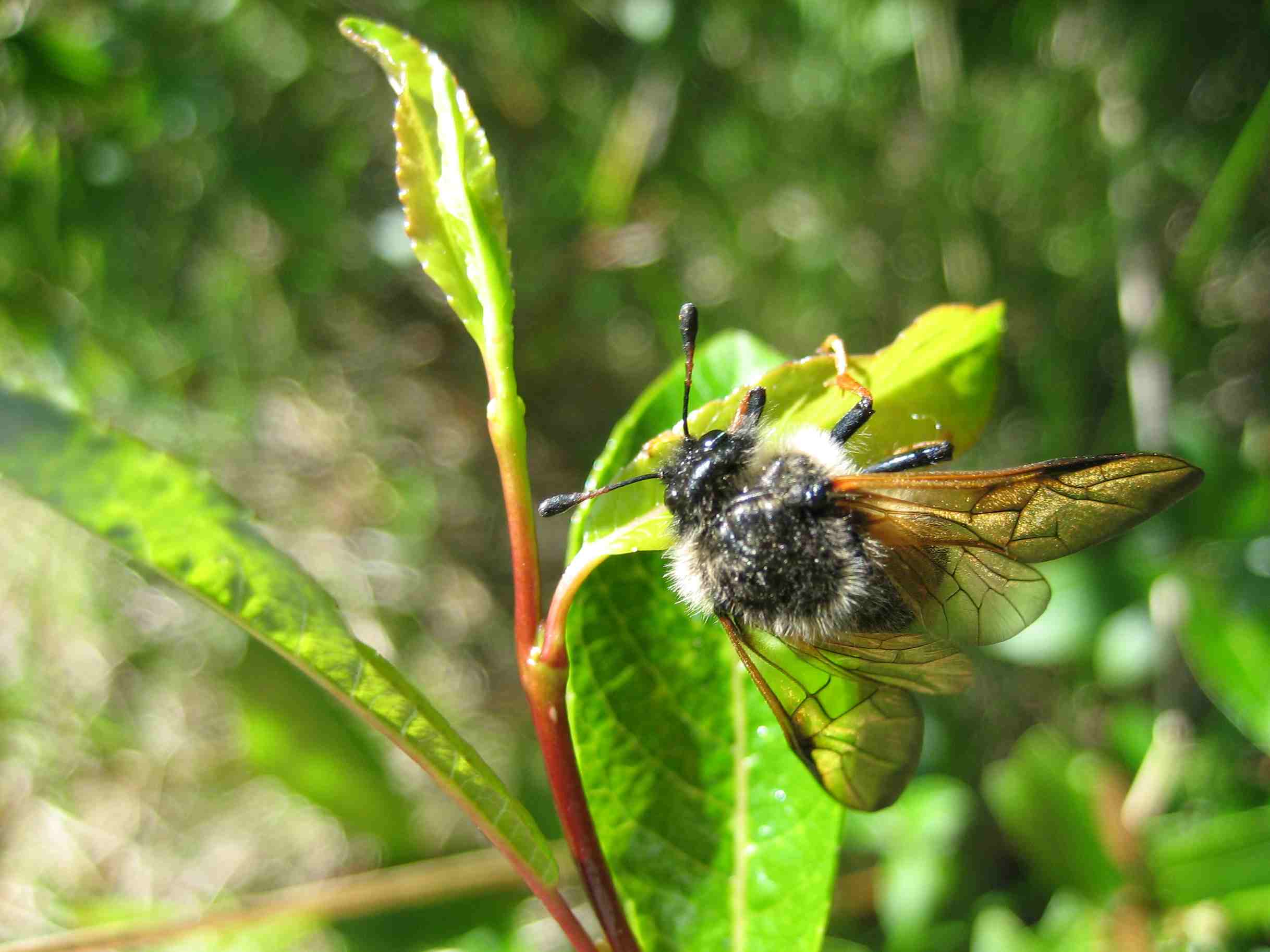 |
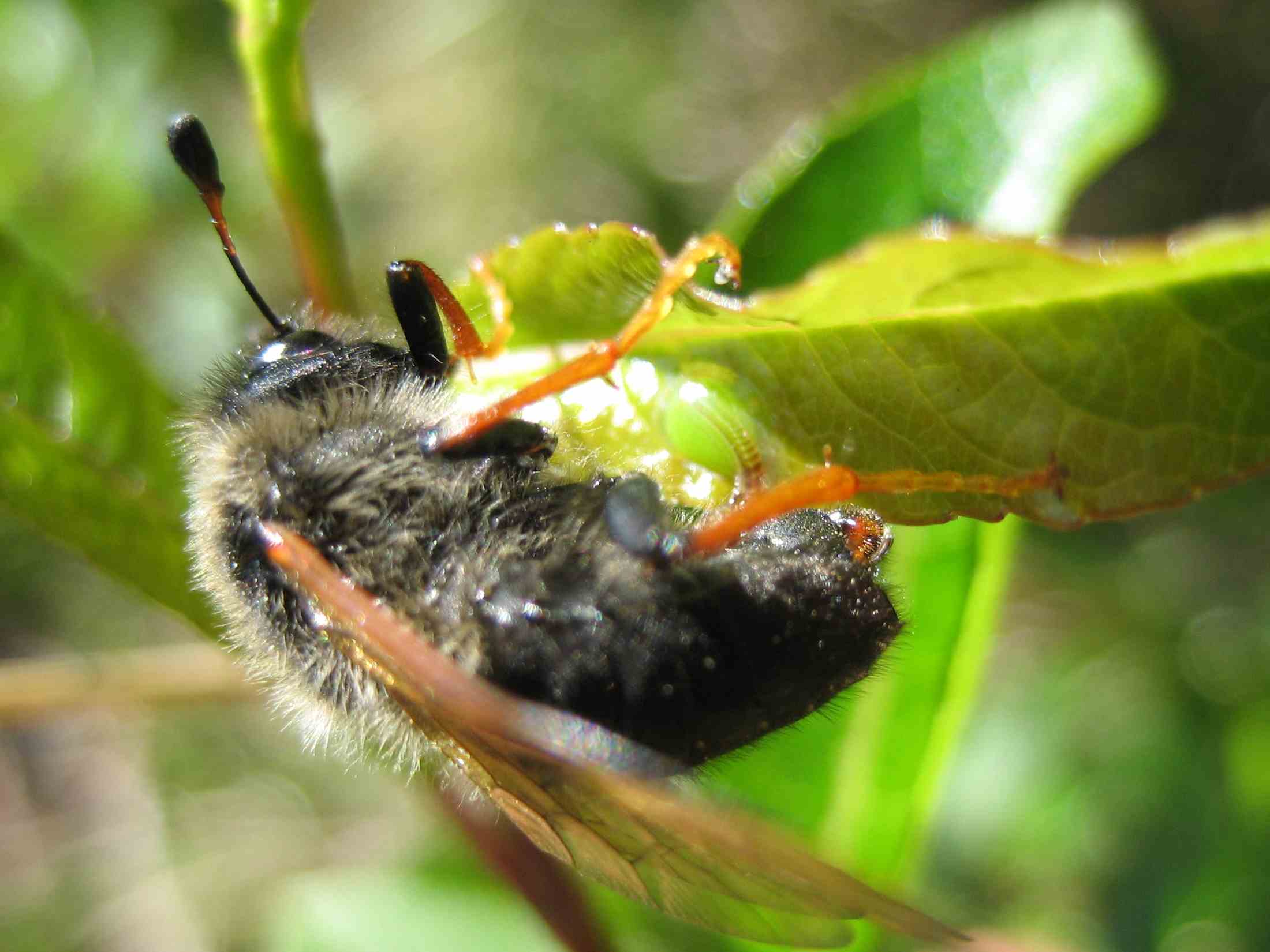 |
|
Female of the cimbicid sawfly Trichiosoma sp. inspecting a Salix phylicifolia shoot prior to oviposition. |
Trichiosoma sp. female ovipositing into a Salix phylicifolia leaf. The green egg, which is visible below the saw, has just been injected under the leaf epidermis. |
|
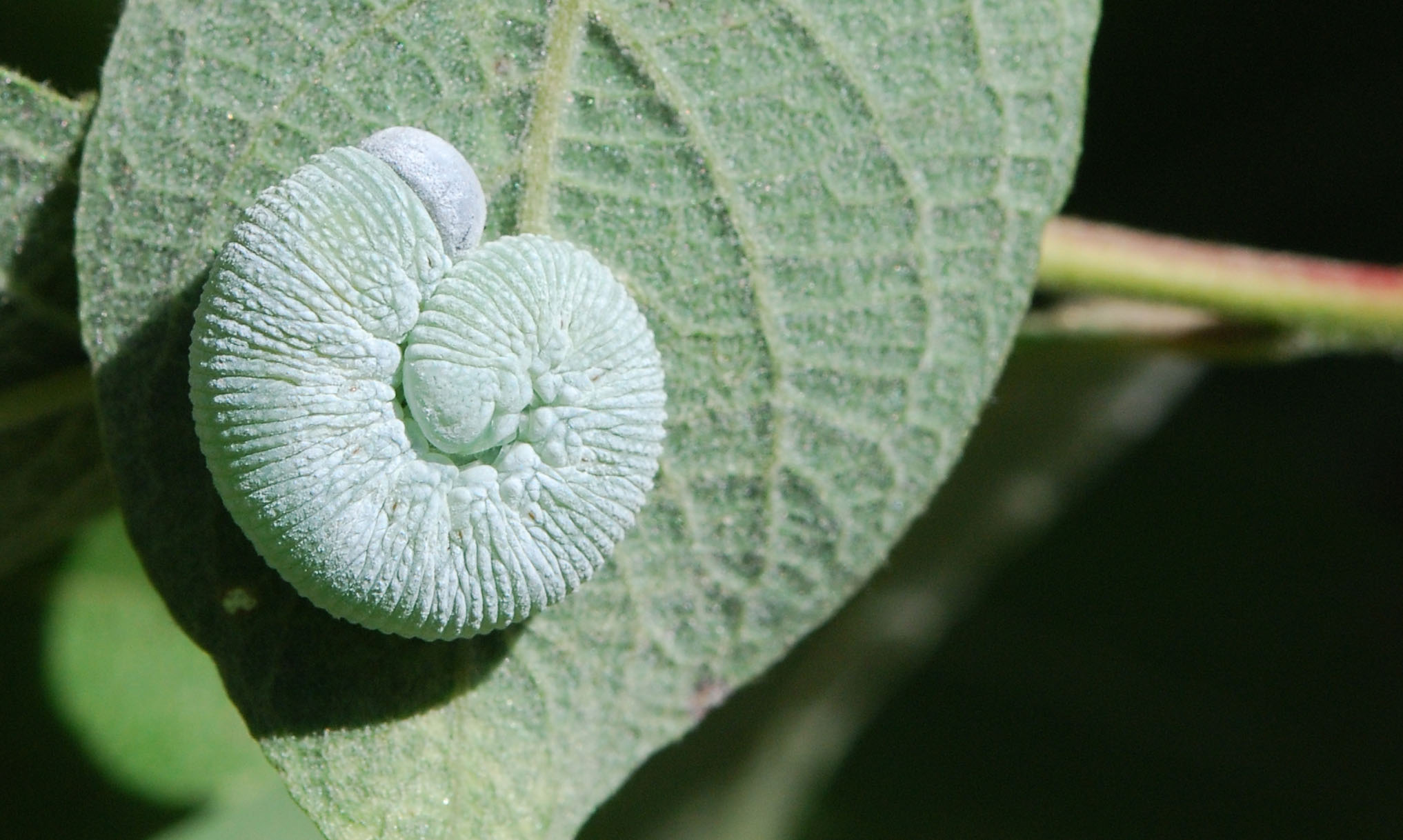 |
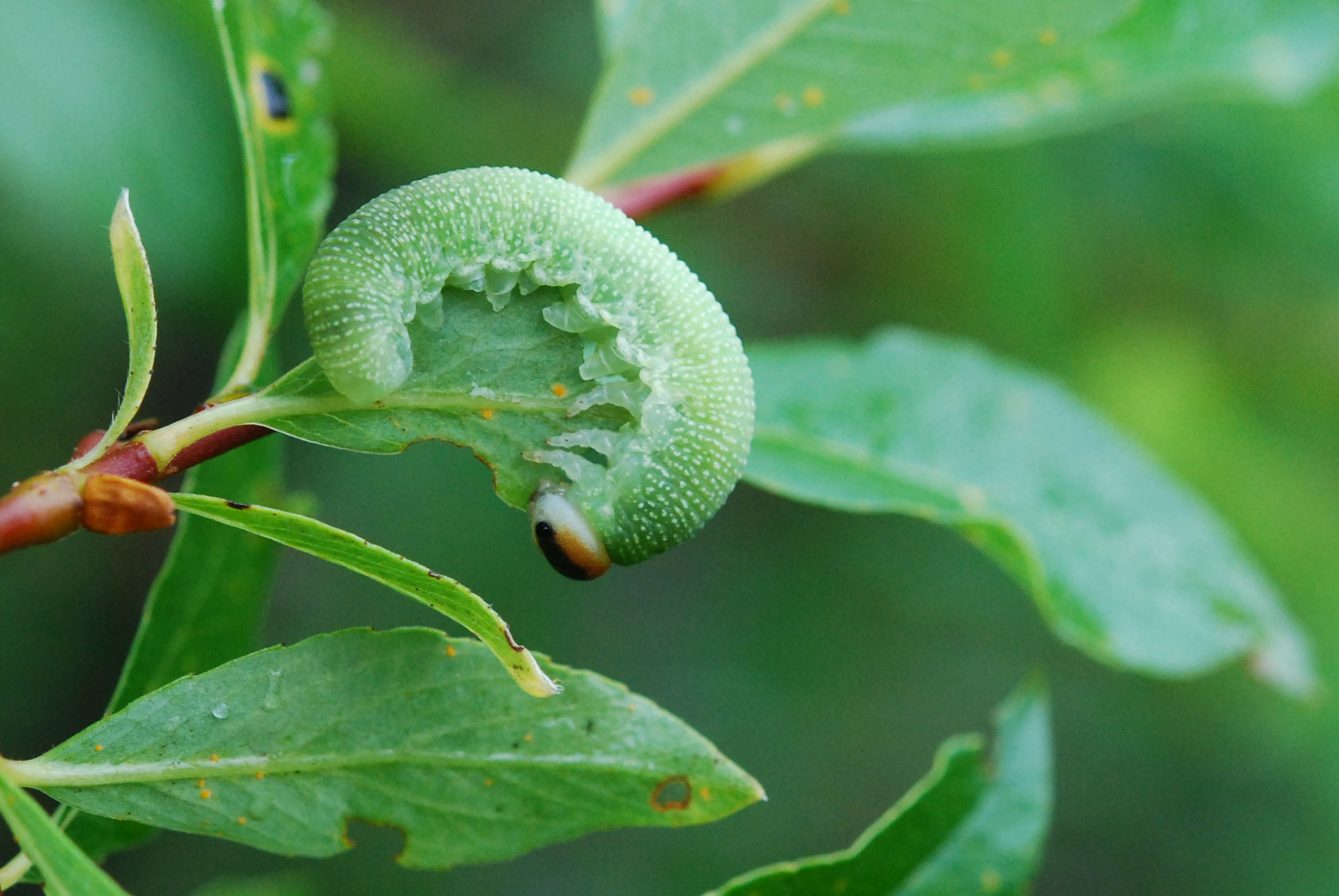 |
|
|
Trichiosoma sp. larva resting on the underside of a Salix caprea leaf. |
Trichiosoma sp. larva devouring a Salix phylicifolia leaf. |
|
|
Aphids, planthoppers, and bugs (Hemiptera) The insect order Hemiptera includes, for example, aphids, planthoppers, cicadas, and bugs. All of these groups have piercing mouthparts, that the plant-feeding groups use to suck sap from plants. Hemipterans exhibit "incomplete metamorphosis" which means that immature stages (nymphs) look like small wingless adults. Various stages of aphids and spittlebugs are commonly found on willows. |
||
|
Aphids (Hemiptera: Aphididae) Aphids representing many different species are common on willows, and they usually occur as big colonies on the stems or shoots. Although individual aphids are small, a big colony of them can cause severe damage and growth retardation for an infested willow individual. Large aphid colonies are almost always tended by wood ants (Formica sp.). The ants harvest honeydew which the aphids expel from tubes on their backs, and in return protect the aphids against predators. |
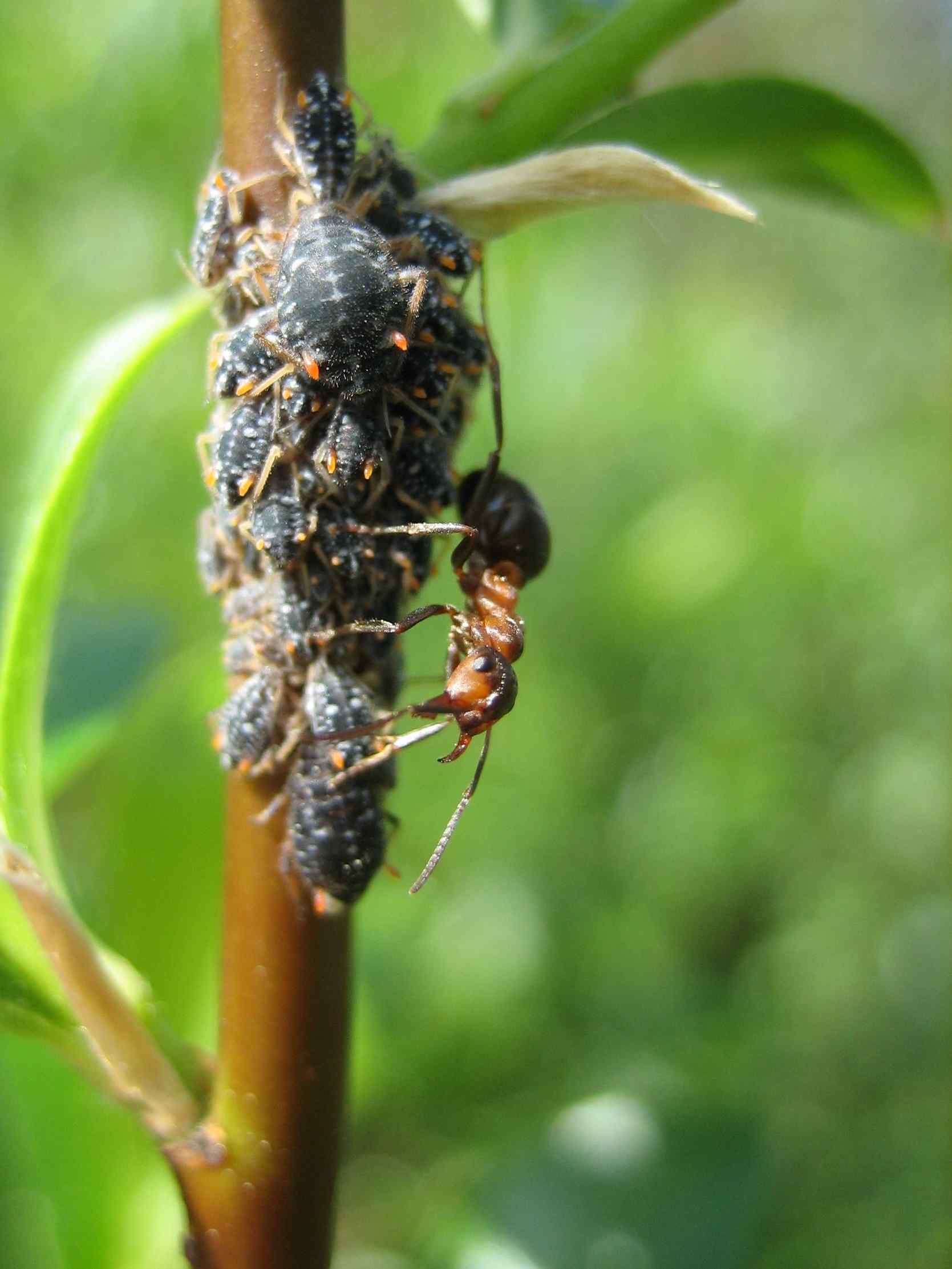 |
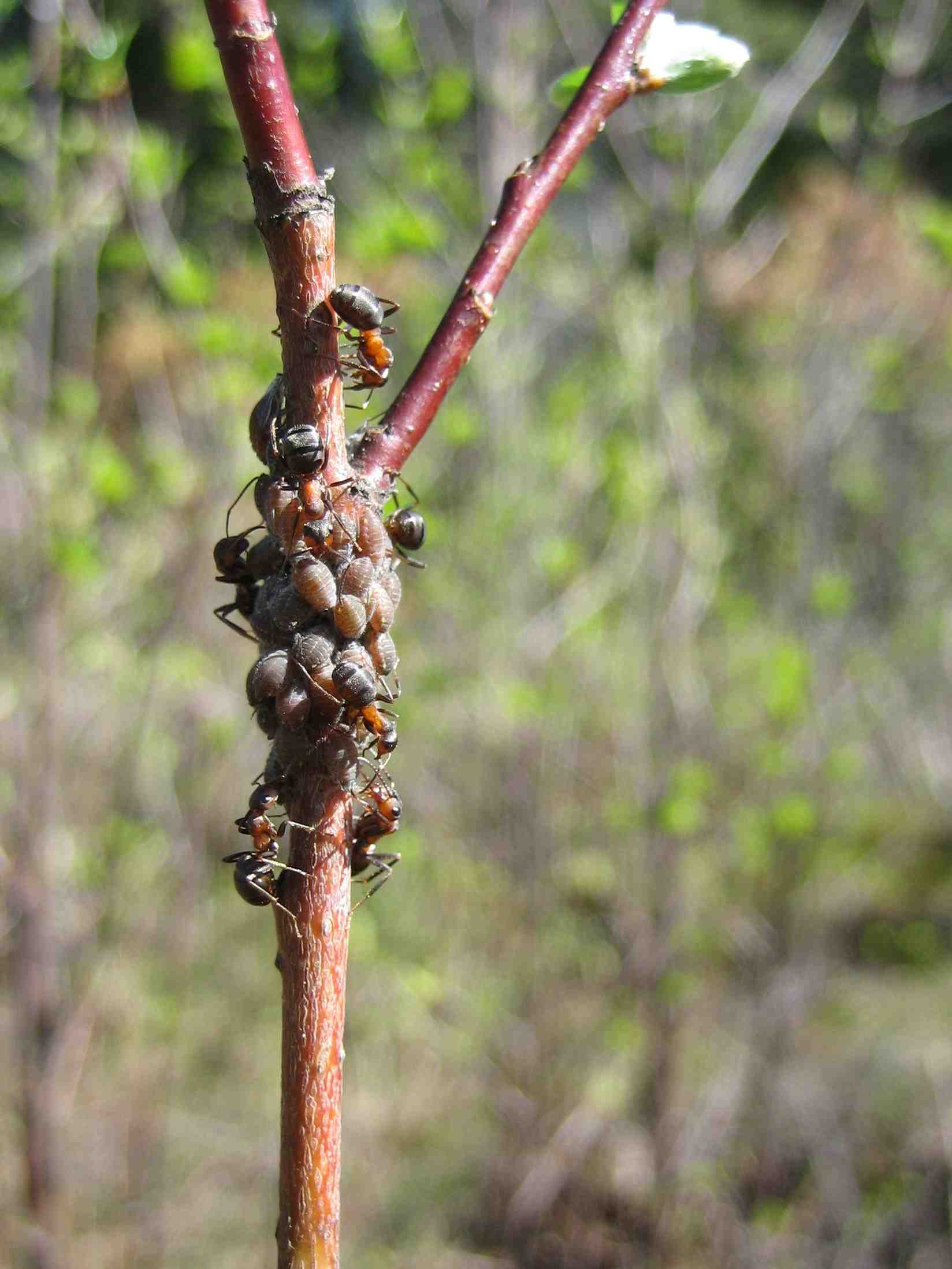 |
|
Aggressive wood ant guarding aphids on Salix phylicifolia stem. Note the orange honeydew tubes on the backs of the aphids. |
Ants tending aphid colony on Salix phylicifolia early in the spring. |
|
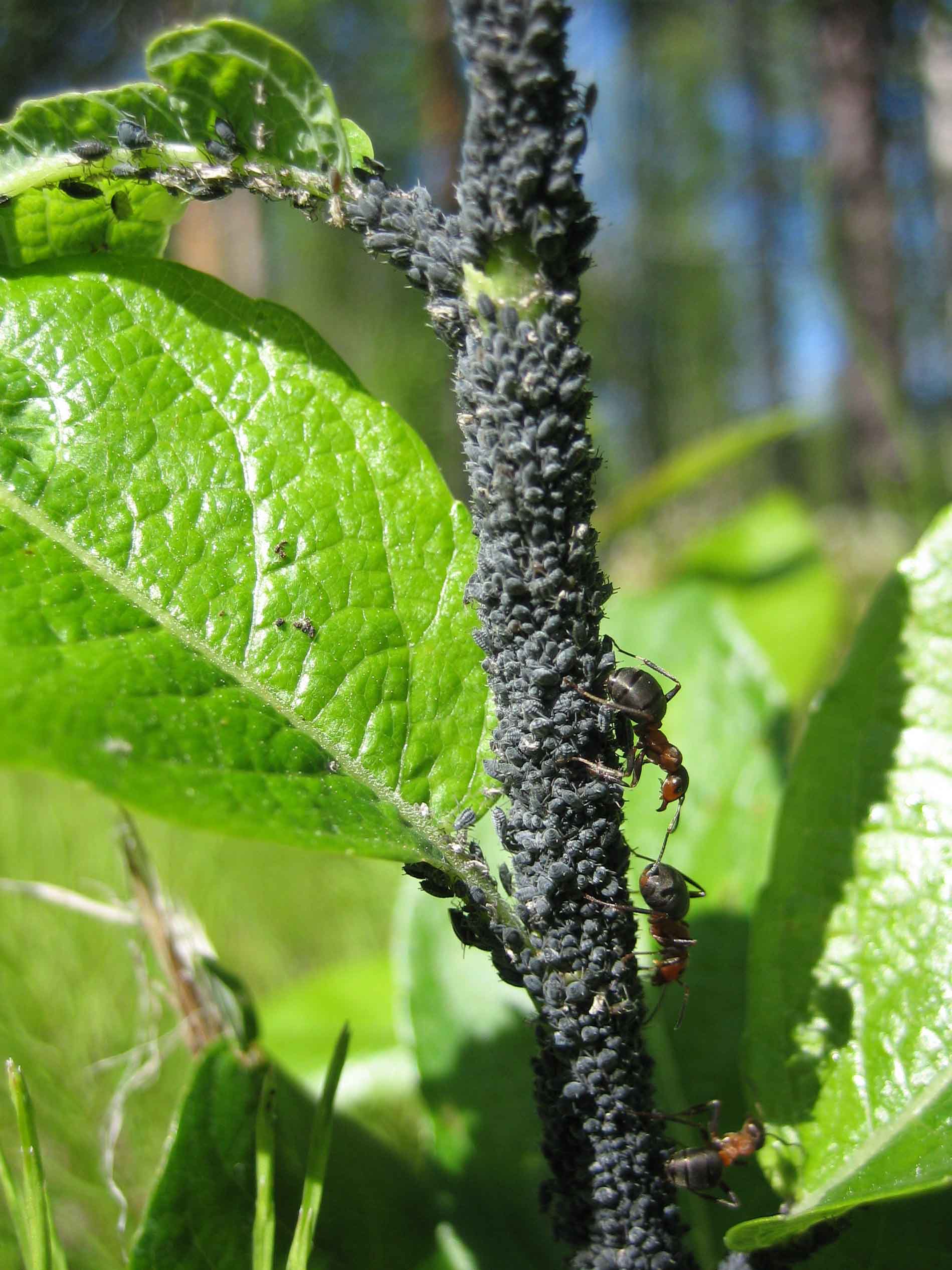 |
||
|
Large aphid colony covering the stem of a Salix caprea sapling. |
||
|
Philaenus spumarius (Hemiptera: Cercopidae) The spittlebug Philaenus spumarius feeds by sucking sap from various plant species. The young stages (nymphs) of the species protect themselves against predators by secreting a ball of foam around the feeding site. The greenish nymphs (that become brown as they approach adulthood) can be found by gently blowing away the foam. |
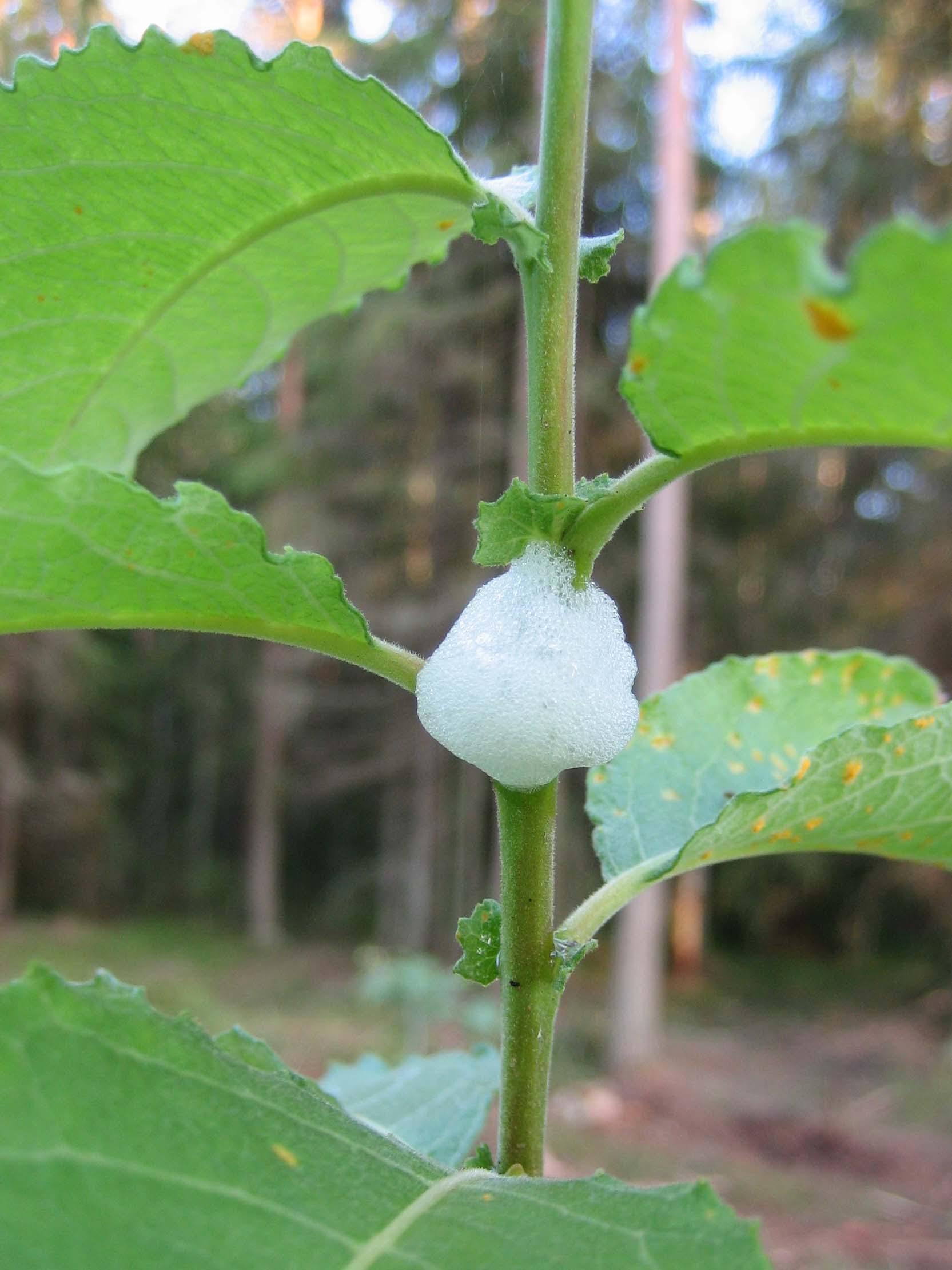 |
|
|
Froth ball secreted by a Philaenus spumarius nymph on Salix caprea. |
||